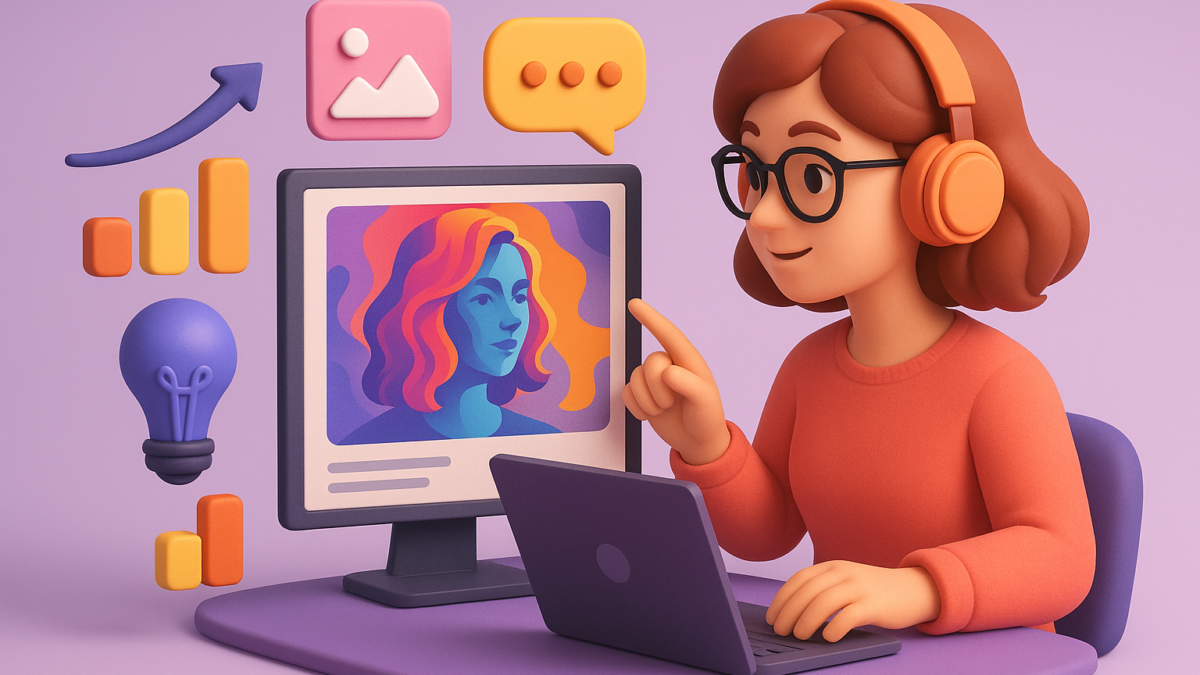AI-Powered Creativity: How Generative Tech Is Redefining Marketing Campaigns
Table of Contents
Introduction
Marketers have always sought the perfect balance between creativity and efficiency. In 2025, that balance is being redefined by generative AI—a technology that produces text, images, video, and even campaign strategies in seconds. What once took weeks of brainstorming, production, and testing can now happen overnight.
But is AI truly creative—or is it just efficient? Let’s explore how generative tech is shaping the future of marketing campaigns.
What Is Generative AI in Marketing?
Generative AI refers to AI models that create new content—text, images, videos, audio, or even code—based on training data. In marketing, this means:
- Copywriting powered by ChatGPT or Jasper AI.
- Ad creatives designed by tools like Canva AI or MidJourney.
- Video ads generated instantly with platforms like Runway and Sora.
Generative AI is not replacing human marketers—it’s amplifying their creativity.
How AI Is Transforming Marketing Campaigns
1. Hyper-Personalization at Scale
Traditional personalization relied on segmenting audiences into groups. Now, AI enables 1:1 personalization—from customized email subject lines to tailored ad visuals.
- Example: Netflix creates personalized artwork for shows depending on a user’s preferences.
2. Faster Campaign Production
Marketers can test multiple ad variations instantly. Instead of weeks of production, AI tools create 50 banner designs in minutes.
- Example: Coca-Cola’s Create Real Magic campaign let fans design AI-generated Coke ads globally.
3. Data-Driven Creative Decisions
Generative AI doesn’t just create—it learns. Marketers can run A/B tests where AI predicts which creative will perform best, based on past campaign data.
4. Video & Interactive Content Explosion
Short-form video is dominating, and AI tools now generate product explainers, social ads, and even interactive experiences with minimal effort.
Benefits of AI-Powered Creativity
- Speed: Campaigns move from concept to live in record time.
- Cost Efficiency: Lower production costs without compromising quality.
- Scalability: Hundreds of variations for global/local markets.
- Experimentation: Creative testing without heavy investments.
Challenges and Ethical Questions
- Originality vs. Authenticity: Can AI-generated work truly be “creative”?
- Bias in AI Models: Risk of producing stereotypical or tone-deaf content.
- Copyright & Ownership: Who owns AI-generated images or taglines?
- Over-Automation: Risk of losing the human touch in brand storytelling.
Real-World Examples of Generative AI in Campaigns
- Nike: Used AI to create personalized running ads based on fitness tracker data.
- Heinz: Asked AI to generate images of “ketchup”—all of them looked like Heinz bottles, reinforcing brand dominance.
- BMW: Leveraged generative AI to create interactive product videos tailored to different customer personas.
The Future: Human + Machine Creativity
Generative AI will not replace marketers but will serve as a co-pilot. Brands that thrive will be those that combine AI’s scale and speed with human creativity and emotional intelligence.
Think of it this way: AI handles the “what if” experiments, while humans decide “what matters.”
Conclusion
Generative AI is no longer just a productivity tool—it’s a creative partner. From personalized campaigns to interactive storytelling, marketers who embrace AI will unlock new levels of innovation and impact.
Don’t just create campaigns—create smarter, faster, and more personalized experiences with AI.
CTA
📢 Distribute Your MarTech Content Smarter
Great campaigns deserve visibility. With iTMunch’s B2B Content Syndication Services, your insights reach marketers, CMOs, and decision-makers across industries.





